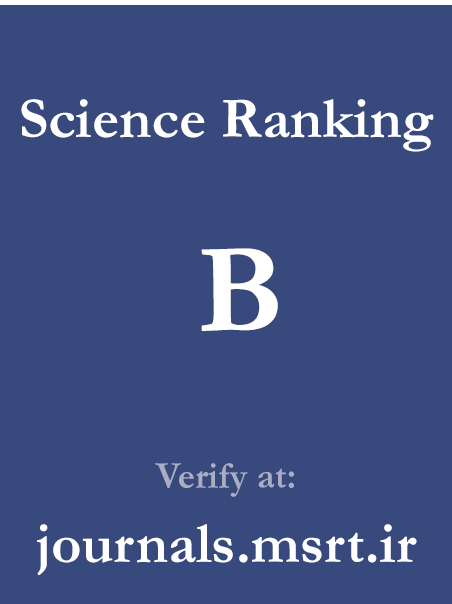Effectiveness of Cranial Electrotherapy Stimulation on Pain Index, Alexithymia, and Chronic Fatigue in Women with Fibromyalgia
Keywords:
Cranial electrical stimulation treatment, pain, alexithymia, chronic fatigue, fibromyalgiaAbstract
Purpose: This study aimed to investigate the effectiveness of cranial electrotherapy stimulation (CES) on pain intensity, alexithymia, and chronic fatigue in women diagnosed with fibromyalgia.
Methods and Materials: A quasi-experimental design was employed using a pre-test, post-test, and follow-up format with experimental and control groups. Twenty-four women diagnosed with fibromyalgia who met the inclusion criteria were selected through convenience sampling and randomly assigned to two groups (n = 12 per group). The experimental group received 12 sessions of CES (20 minutes each, twice weekly for six weeks), while the control group was placed on a waiting list. Data were collected using the Mohammadian Pain Questionnaire (1995), Chalder Fatigue Scale (1993), and the Toronto Alexithymia Scale (TAS-20). Statistical analyses included multivariate analysis of covariance (MANCOVA), univariate ANCOVAs, and Bonferroni post hoc tests, conducted using SPSS-22.
Findings: Results indicated significant differences between the experimental and control groups in all three outcome variables at post-test, with sustained effects at follow-up. CES significantly reduced pain intensity (F = 6.58, p = 0.01, η² = 0.24), alexithymia (F = 11.15, p = 0.003, η² = 0.34), and chronic fatigue (F = 16.76, p = 0.001, η² = 0.46). Bonferroni post hoc analysis confirmed significant differences between pre-test and post-test scores in the experimental group for all three variables, while changes between post-test and follow-up were not statistically significant, indicating the persistence of treatment effects.
Conclusion: Cranial electrotherapy stimulation is an effective, non-invasive intervention for reducing pain, emotional dysregulation, and fatigue in women with fibromyalgia. Its sustained therapeutic effects and potential integration into multidisciplinary care highlight its clinical value in addressing the complex symptomatology of this disorder.
Downloads
References
Akbaş, E., & Yiğitoğlu, G. T. (2022). The effect of solution-focused approach on anger management and violent behavior in adolescents: A randomized controlled trial. Arch Psychiatr Nurs, 41, 166-174. https://doi.org/10.1016/j.apnu.2022.07.029
Bair, M. J., & Krebs, E. E. (2020). Fibromyalgia. Annals of Internal Medicine, 172(5), 33-48. https://doi.org/10.7326/AITC202003030
Bateman, L. (2023). Fibromyalgia and myalgic encephalomyelitis/chronic fatigue syndrome. Neurobiology of Brain Disorders, 559-573. https://doi.org/10.1016/B978-0-323-85654-6.00061-7
Bourke, J. H., Wodehouse, T., & White, P. D. (2021). Central sensitisation in chronic fatigue syndrome and fibromyalgia; a case control study. Journal of psychosomatic research, 150, 110624. https://doi.org/10.1016/j.jpsychores.2021.110624
Cojocaru, C. M., Popa, C. O., Schenk, A., Suciu, B. A., & Szasz, S. (2024). Cognitive-behavioral therapy and acceptance and commitment therapy for anxiety and depression in patients with fibromyalgia: a systematic review and meta-analysis. Med Pharm Rep, 97(1), 26-34. https://doi.org/10.15386/mpr-2661
Da Silva, R. D. M. F., Brunoni, A. R., Miguel, E. C., & Shavitt, R. G. (2019). Transcranial direct current stimulation for obsessive-compulsive disorder: patient selection and perspectives. Neuropsychiatric Disease and Treatment, 15, 2663. https://doi.org/10.2147/NDT.S184839
De Benedittis, G. (2023). The Challenge of Fibromyalgia Efficacy of Hypnosis in Alleviating the Invisible Pain: A Narrative Review. Int J Clin Exp Hypn, 71(4), 276-296. https://doi.org/10.1080/00207144.2023.2247443
Di Carlo, M., Bianchi, B., & Salaffi, F. (2024). Fibromyalgia and the Difficult Synthesis. J Rheumatol, 51(6), 554-555. https://doi.org/10.3899/jrheum.2024-0321
Elijah, J., Powell, K., & Smith, M. A. (2022). The Efficacy of Capsaicin on Sleep Quality and Fatigue in Fibromyalgia. J Pain Palliat Care Pharmacother, 36(2), 112-116. https://doi.org/10.1080/15360288.2022.2063468
Elkins, G. (2023). Efficacy of Hypnosis Interventions: Fibromyalgia, Sleep, Oncology, Test Anxiety, and Beliefs. Int J Clin Exp Hypn, 71(4), 273-275. https://doi.org/10.1080/00207144.2023.2243785
Favretti, M., Iannuccelli, C., & Di Franco, M. (2023). Pain Biomarkers in Fibromyalgia Syndrome: Current Understanding and Future Directions. Int J Mol Sci, 24(13), 10443. https://doi.org/10.3390/ijms241310443
Flynn, D. (2023). Chronic Pain Syndromes: Fibromyalgia. Essent, 533-537-515. https://pubmed.ncbi.nlm.nih.gov/37812528/
García-López, H., Calle-Ortega, F., García-Robles, P., Del-Rey, R. R., Obrero-Gaitán, E., & Cortés-Pérez, I. (2024). Effectiveness of transcutaneous electrical nerve stimulation improves pain intensity, disability and quality of life in patients with fibromyalgia syndrome: a systematic review with meta-analysis. Disabil Rehabil, 21, 1-11. https://doi.org/10.1080/09638288.2024.2331069
Giorgi, V., Bazzichi, L., Batticciotto, A., Pellegrino, G., Di Franco, M., Sirotti, S., Atzeni, F., Alciati, A., Salaffi, F., & Sarzi, P. (2023). Fibromyalgia: one year in review. Clin Exp Rheumatol, 41(6), 1205-1213. https://doi.org/10.55563/clinexprheumatol/257e99
Lusicic, A., Schruers, K. R. J., Pallanti, S., & Castle, D. J. (2018). Transcranial magnetic stimulation in the treatment of obsessive-compulsive disorder: current perspectives. Neuropsychiatr Dis Treat, 14, 1721-1722. https://doi.org/10.2147/NDT.S121140
Maddox, E. K., Massoni, S. C., Hoffart, C. M., & Takata, Y. (2023). Dietary Effects on Pain Symptoms in Patients with Fibromyalgia Syndrome: Systematic Review and Future Directions. Nutrients, 15(3), 716. https://doi.org/10.3390/nu15030716
Martino, G., Caputo, A., Vicario, C. M., Catalano, A., Schwarz, P., & Quattropani, M. C. (2020). The relationship between alexithymia and type 2 diabetes: a systematic review. Front Psychol, 11, 20-26. https://doi.org/10.3389/fpsyg.2020.02026
Downloads
Published
Submitted
Revised
Accepted
Issue
Section
License
Copyright (c) 2025 Seyed Hassan Hashemi Kenti (Author); Mohammad Taghi Badelleh Shamoshaki (Corresponding author); Javanshir Asadi, Arasto Mirani (Author)

This work is licensed under a Creative Commons Attribution-NonCommercial 4.0 International License.

